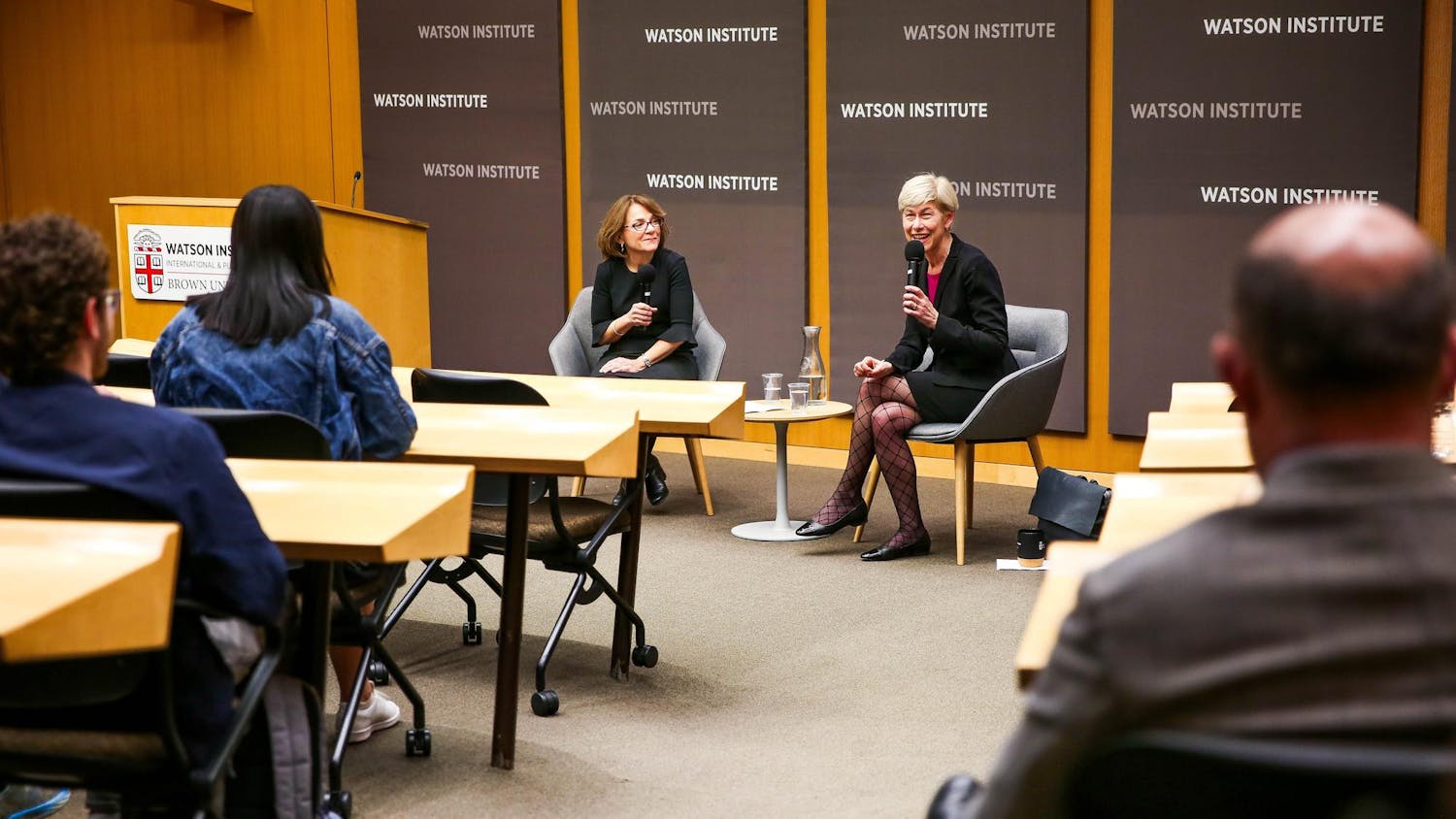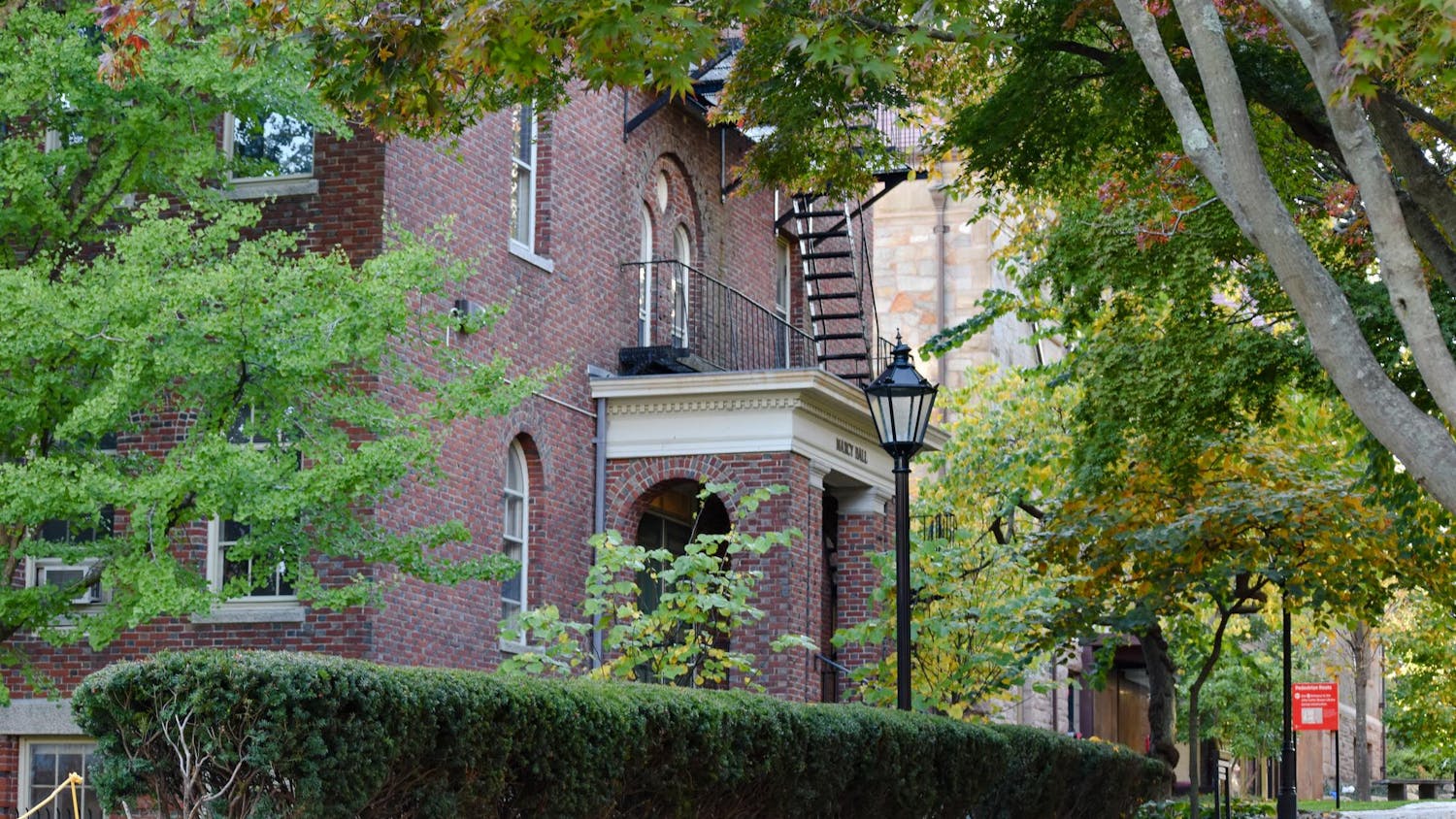Despite having the highest tuition in Rhode Island, Brown had the lowest average debt of all reporting colleges in the state for class of 2011 graduates, according to the Project on Student Debt, a report published by the Institute for College Access and Success, a nonprofit.
University graduates that year held an average of $20,455 of student debt, lower than the state average of $29,097 and also less than the national average debt of $26,600, according to the report.
Rhode Island had the fourth highest average debt in the country across its 2011 college graduates.
At Bryant University 2011 graduates had an average loan debt of $37,813, ranking them third highest among the reporting private colleges in Rhode Island.
The average amount of debt at Bryant is generally "very stable and predictable," said John Canning, director of financial aid at Bryant.
Private schools like Bryant attract a large percentage of students from the middle-income bracket, he said, which contributes to higher loan debt averages. Bryant also relies on tuition, rather than endowment funds, to fund operating costs, he said.
Bryant tries to prevent student debt loads from increasing by matching tuition hikes with increases in aid, Canning said.
Canning added that schools in higher demand, such as Brown, attract more students that can pay tuition up front.
Loan debt at Brown has been decreasing since 2008, when the University instituted a new financial aid policy, according to James Tilton, director of financial aid. The policy eliminated loans from financial aid packages for students with family incomes under $100,000 and capped loans for those with incomes of $150,000 and below.
Brown is the only Rhode Island college on TICAS' list that has met its financial aid pledge to reduce or eliminate student loans in financial aid packages.
Less than half of Brown students take out loans - a fact stemming from a combination of the University's financial aid program and the socioeconomic makeup of the student body, Tilton said.
Ivy lagger
The University's average debt burden is the highest in the Ivy League. All other Ivies, except Columbia, which did not report statistics, had an average graduating debt load less than $20,000 for the class of 2011. Princeton has the lowest average loan debt at $5,330 per graduate, according to the report.
An institution's ability to fund financial aid correlates with students' average loan debt, explaining why larger endowment schools with no-loan policies, like Princeton, have smaller average loan debt, Tilton said.
Yale continues to see its average loan debt decrease in the current economic climate, as students are "more loan-adverse" and fewer choose to take out loans to replace work-study, said Caesar Storlazzi, director of financial aid at Yale.
Graduates of Yale in 2011 had an average student loan debt of $9,254, the second lowest in the Ivy League.
Yale's financial aid policy, which does not include any loans in its financial aid packages regardless of family income level, is "absolutely a factor" in the school's low loan debt rates, Storlazzi said.
Though about 30 percent of the graduating class had loan debt in 2011, Storlazzi said the percentage decreased to about 15 percent for the class of 2012.
He added that Yale has continued to strengthen its financial aid policies for middle-class students despite the negative effects the financial downturn had on its endowment, though the amount of money budgeted for financial aid that comes from the operating budget rather than from endowment returns has increased, he said.
Data debt
Though the report sheds light on national student debt load trends, it is affected by problems related to data collection and availability.
The report does not include loans incurred by parents, which comprise a substantial portion of educational debt, Canning said. He added that the statistics from institutions like Bryant are especially affected by this omission, because students at such schools depend on their parents to help fund their education.
The failure to address parent loans only provides prospective students with "half the picture," said Charles Kelley P'13, executive director at the Rhode Island Student Loan Authority, a nonprofit state organization.
Kelley also cited the lack of data on Stafford Loan defaults after the first three years as a barrier to getting a comprehensive look at student loan debt.
Part of the problem in reporting data is that colleges do not always have data on private loans, said Debbie Cochrane, research director at TICAS.
"Student loan debt can be one of the best investments a student can make," she added. "But another important aspect is whether the borrower can repay loans after graduation."
The TICAS report also suffers from self-selection bias - because institutions have the option to submit data, colleges with high debt may opt to not respond in fear that publicizing their loan debt numbers would hurt their appeal to applicants, Cochrane said.
"While it's the best we've got, it's certainly flawed," she added.
Citing inflation and annual tuition hikes of 2 to 5 percent, Canning said it is very difficult to look at the statistics from the class of 2011 and determine what loan debt will look like in 2017, the expected graduation year of students applying to college this year.
The lowdown on loans
"It's critical for institutions to be upfront about cost of attendance," Tilton said.
Deciding what constitutes an appropriate amount of loan debt is a "tough decision," he said, and the Financial Aid office works with families on strategies to minimize loan debt.
In Tilton's six years with the financial aid office, focus has shifted from just explaining the basics of financial aid to helping parents and students understand the available financing options, he said.
"We do a
more thorough job," Tilton said. "It's not just, 'Here's your grants, here's your loans.'"
For students in Rhode Island but not at Brown, the Rhode Island Student Loan Authority provides similar programs to help students prepare financially for college.
Unlike many federal programs, RISLA offers loan forgiveness programs that focus on the first two to four years after graduation, during which students are most vulnerable to loan defaults, said Noel Simpson, deputy director and chief financial and compliance officer at RISLA. Programs sponsored by RISLA also include loan forgiveness for students who work as nurses in high-demand areas in Rhode Island or start businesses in the state, he said.
Correction appended: An earlier version of this incorrectly stated that a financial aid policy instituted in 2008 eliminated loans for families with expected contributions of under $100,000. In fact, the policy eliminated loans for families with incomes below that amount. The Herald regrets the error.




